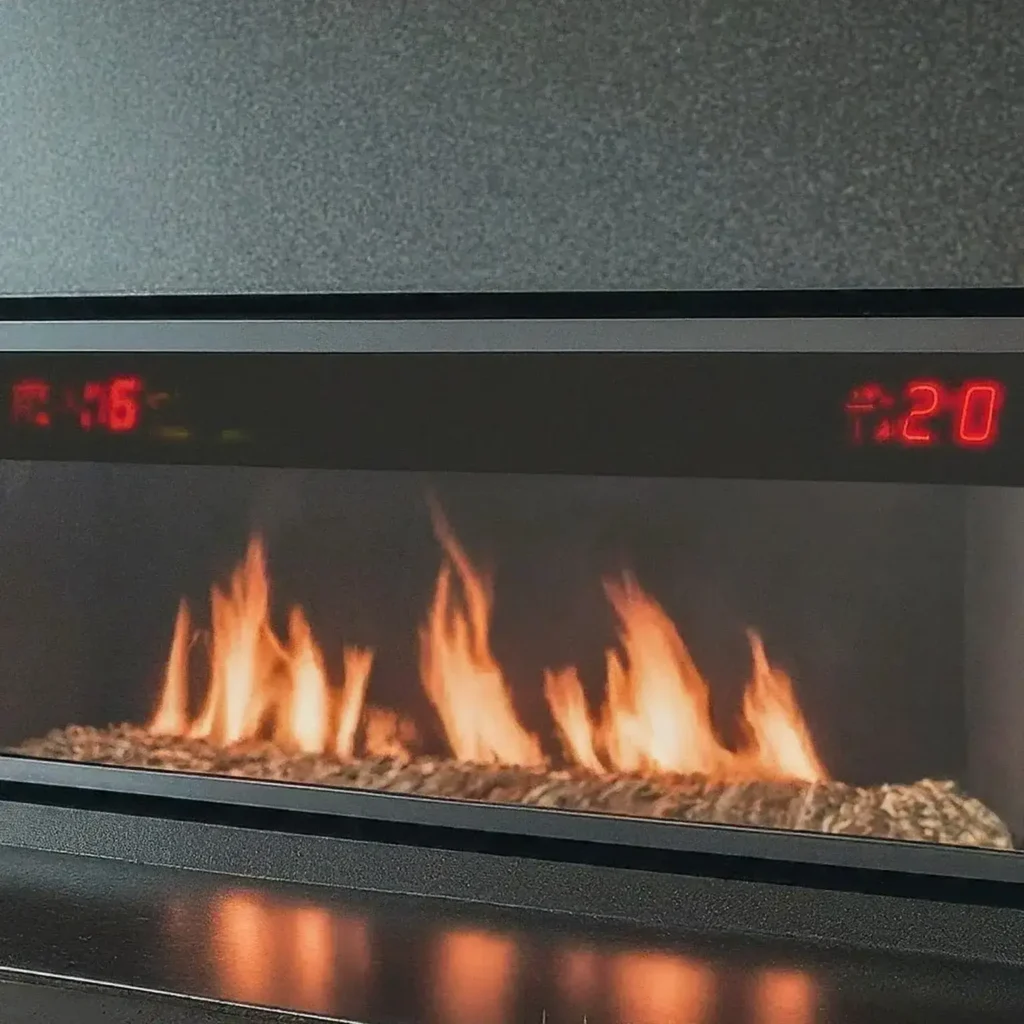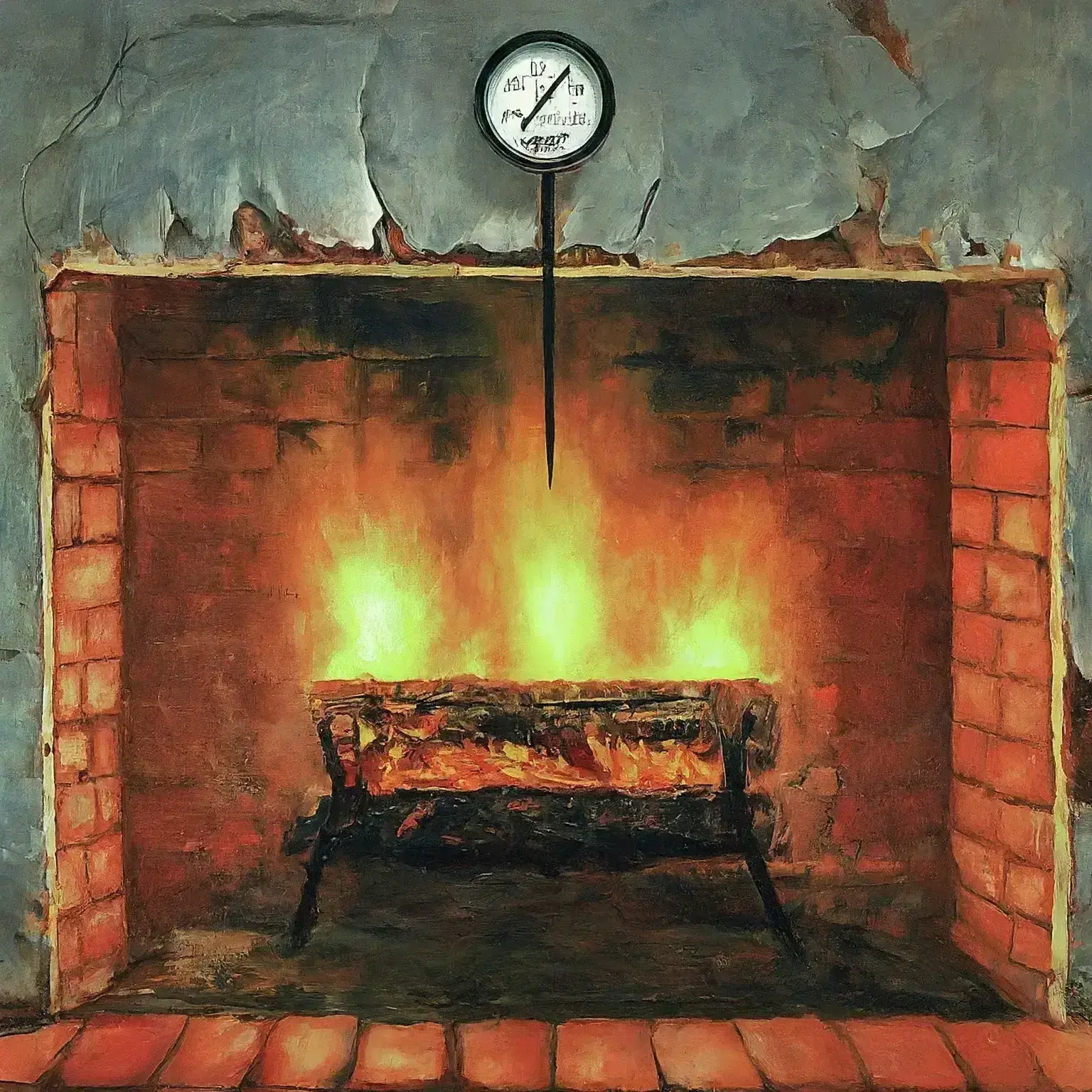The chimney and flue may not be the star of your fireplace, but they play a crucial role. While the firebox gets hot,
have you ever wondered just how hot the chimney flue can get? It can reach over 1000°F but typically operates between 300° and 480°F. Anything over 1000°F could indicate a potential chimney fire.
This article delves into the temperatures your flue can reach and the importance of monitoring them. Read on to learn more about chimney flue temperatures.
How Hot Does A Chimney Flue Get?
Chimney flue temperatures vary, but they can reach up to 1000°F. If they exceed this, it may signal a chimney fire.
When you have a roaring fire in your fireplace, you may wonder how hot it gets inside the flue and chimney. Enthusiasts often monitor stove efficiency to ensure they’re generating enough heat for their homes. Let’s take a closer look at these temperatures.
A typical chimney flue ranges from 300-480°F unless excessive fuel is added to the fire, causing higher temperatures. This increases the risk of a chimney fire and potential damage to your flue and chimney.
When temperatures drop below 300°F, creosote begins to form inside the flue. Maintaining a temperature above this mark is recommended to prevent creosote buildup and ensure sufficient heat for your home.
Depending on your fireplace and flue setup, you may burn at a higher temperature to effectively heat your home.
Consistently exceeding 800°F prompts consideration of a technician’s evaluation for potential replacement. Burning excessive fuel indicates significant heat loss, leading to inefficient fireplace operation.
Creosote’s flashpoint is only 165°F, making it highly flammable. At higher temperatures, creosote transforms from a solid to a liquid, potentially dripping into the fire.
It’s crucial to address creosote buildup, as it is a primary cause of chimney fires. Taking preventive measures is key!

How To Check Your Flue’s Temperature
For a single wall stove pipe, attach a magnetic stove pipe thermometer about 18 from the back of your fireplace. For a double-wall stove pipe, use a probe-style thermometer placed at the center of the piping for an accurate reading.
Various thermometer brands are available to help you monitor your stove’s efficiency. Consider options like:
- Midwest Hearth Wood Stove Thermometer (Single Wall)
- Galafire Magnetic Stove Thermometer (Single Wall)
- Condar Fluegard Stove Thermometer (Double Wall)
These highly rated thermometers, readily available on Amazon, enable you to keep tabs on your stove’s temperature and detect potential overheating.
Can I Put Anything Near The Flue?
Maintain a 36” clearance from the flue in all directions to comply with safety regulations. Anything placed or hung near the flue should meet this requirement.
Fireplaces and wood stoves must be surrounded by stone, brick, or tile materials within a 36” radius. This rule extends to the flue, which can also reach high temperatures.
Consider the impact of released heat on nearby artwork or decorative items. Excessive heat could damage paint and other materials.
When deciding what to place near your flue, consider the type of fireplace you have, whether it’s a wood stove, masonry, or gas fireplace.
Remember, a wood stove’s flue is the round metal piping extending from the top, while other styles have a similar material lining the chimney’s interior to direct smoke and chemicals upward.
Modern homes typically feature steel flues, but it’s always wise to check local building codes for specific flue requirements.
Chimney vs. Flue: What’s the Difference?
A chimney serves as the vertical channel guiding smoke and combustion gases from your fireplace. Inside the chimney, you’ll find the flue, an inner sleeve that protects the chimney from damage.
While the chimney is the structure expelling fumes, the flue is the conduit inside, safeguarding the chimney’s integrity. A chimney can house multiple flues for various fireplaces or appliances.


